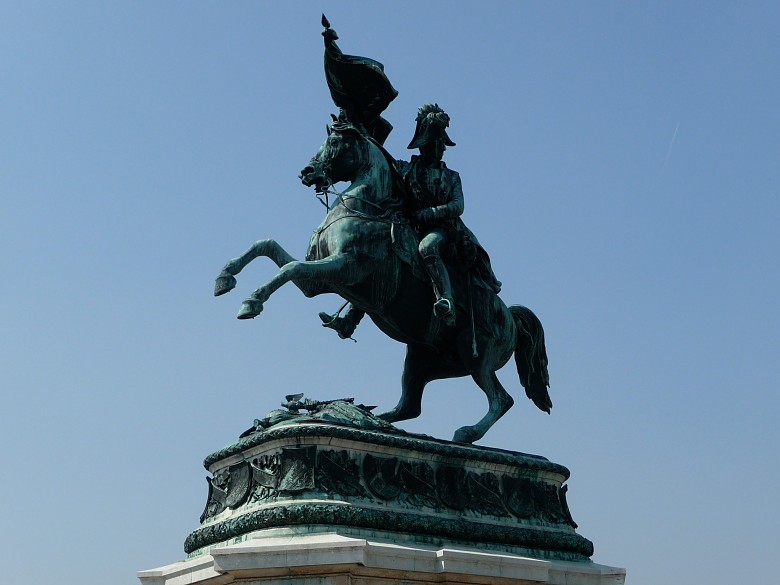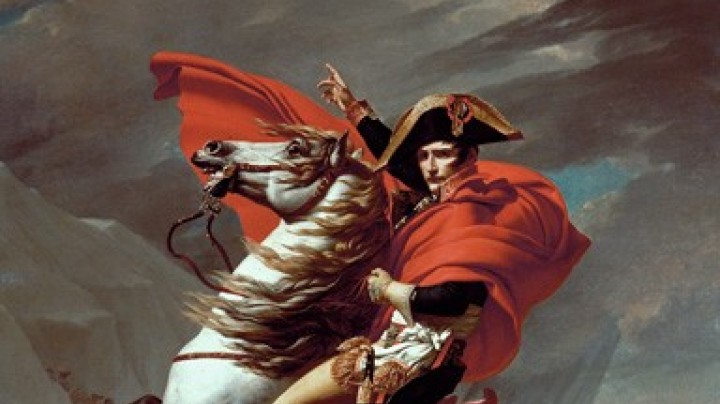The private life of Archduke Karl
After Karl had been excluded by his brother from active military decision-making after 1809, he withdrew from public life but continued to pursue an astonishing variety of interests.
Thanks to the vast inheritance of his adoptive parents Karl became the wealthiest member of the dynasty. He possessed extensive estates in Hungary, Moravia, Galicia and the Austrian part of Silesia.
His principle residence was the Viennese palace today known as the Albertina. In addition he commissioned a palatial villa in the Vienna Woods, named the Weilburg in honour of his wife. Designed by the architect Joseph Kornhäusel, and one of the most important creations of the Classicistic age in Austria, it was sadly destroyed in 1945.
Karl did not marry until 1815, when he was already forty-four. His bride was Henriette von Nassau-Weilburg (1797–1829). Henriette had been brought up in the Protestant faith and refused to contemplate conversion to Catholicism, which was normally a precondition for marrying into the Habsburg dynasty. Despite the large difference of 26 years in the couple’s ages, the marriage was particularly happy. Henriette is remembered for the part she played in introducing the Christmas tree into Austria, a custom that had hitherto been unknown there.
Karl and Henriette had six children. Their firstborn child, Maria Theresia (1816–1867), became the wife of King Ferdinand II of Naples and Sicily, thus marrying back into her paternal grandmother’s family.
Albrecht (1817–1895), whose biography appears as a separate chapter, became one of the most formative figures of the dynasty in the nineteenth century. Extremely conservative in his views, he was one of Emperor Franz Joseph’s most important advisors.
Karl Ferdinand (1818–1874) embarked on a military career. He and his wife, Archduchess Elisabeth (1831–1903) from the collateral Hungarian line of the dynasty, had five children, including three sons, who were adopted after their father’s death by his childless elder brother Albrecht.
Other children resulting from the union of Karl and Henriette include a son called Friedrich (1821–1847), who died at a relatively young age, a daughter called Maria Karolina (1825–1915), who married her cousin Archduke Rainer, and their youngest son, Wilhelm (1827–1894), who as well as pursuing a military career was also Grand Master of the Teutonic Knights.
In 1829 Henriette died of scarlet fever, aged just thirty-two. She is the only Protestant to be buried in the Imperial Crypt of the Church of the Capuchin Friars in Vienna.
Archduke Karl died in Vienna on 30 April 1847, highly esteemed and respected as an authority on military strategy. He is buried next to his wife in the Imperial Crypt.
Demoted to the position of a military theoretician by his jealous brother, the archduke is commemorated in Vienna by the imposing equestrian monument executed by Anton Dominik Fernkorn and unveiled in 1860. As one of the two eponymous heroes, the Victor of Aspern graces Vienna’s Heldenplatz (Heroes’ Square) alongside Prince Eugene of Savoy.












